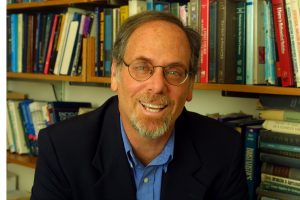
- Prof. Alan Gelfand – ISDS – Duke University – USA
- FCUL (DEIO) – Campo Grande – Bloco C/6 Piso 2 – Sala 6.2.53 – 14h:30m
- Terça-feira, 25 de Março de 2008

Alan Gelfand
Digital Image IMG-0076
File 1107/02
© Duke University Photography Jim Wallace
Abstract: We will discuss the use of differential equation models to consider the analysis of two types of space-time data. In one case we look at soil moisture observed at a collection of locations in two hour increments over the course of several months. Soil moisture levels are a complex process that is driven by inputs of precipitation along with transpiration and drainage. Infinitesimal change in soil moisture can be expressed using a differential equation involving forms for transpiration and drainage as a function of soil moisture. In a second case we consider space time point patterns driven by a latent space intensity surface which is a realization of a stochastic process, that is, our model is an example of a Cox process. The intensity surface is formulated as a growth process characterized through a stochastic differential equation. Our motivating example is to understand annual urban growth through single family home construction.
We show how both of these examples can be handled using hierarchical modelling specifications. In each case, we discretize time, replacing integrals by sums. However, each introduces further computational wrinkles. The former works empirically specified transpiration and drainage functions while the latter treats a very large number of points (roughly 12,000 houses). Results of the analyses will be presented.
